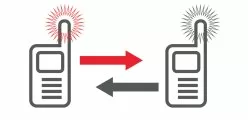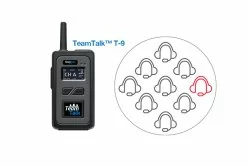What is Full Duplex?
There are three types of communication channels. Simplex, Half-Duplex, and Full-Duplex. Each has its place in workplace communication. Knowing the advantages and disadvantages of each can help make a network more effective efficient and also help choose the most cost-effective solution.

SIMPLEX
A simplex system can send messages in only one direction, from a designated transmitting device to a receiving device. An example would be a public announcement system or a musician's microphone connected to a loudspeaker.
 HALF-DUPLEX
HALF-DUPLEX
A half-duplex system is able to transmit communications in both directions, but not at the same time. Traditional two-way radios are half-duplex devices. The two-way radio has a push-to-talk (PTT) button which allows the user to transmit messages (if no one else is transmitting). Once you push the PTT, you can talk but cannot hear others until you release the PTT. Two-way radio users must take turns transmitting.

FULL-DUPLEX
A full-duplex system is able to transmit communications in both directions simultaneously. This means that users can speak and hear others at the same time, because there are two communication paths between them. A common example is a cell phone conversation or a conference phone call with multiple people talking and listening at once.
Read more on the advantages and ideal applications for full-duplex communication systems.





